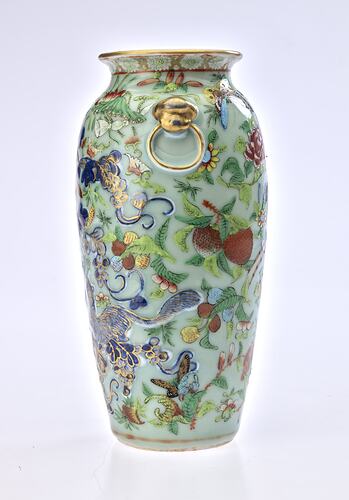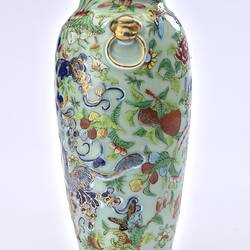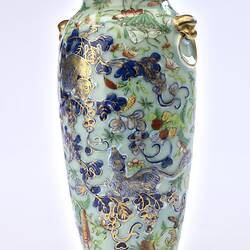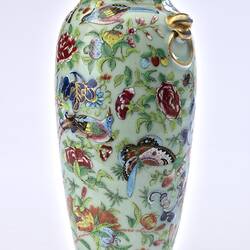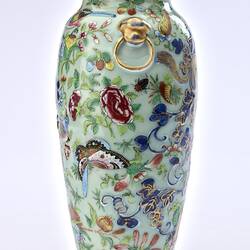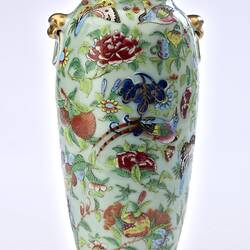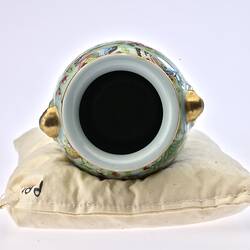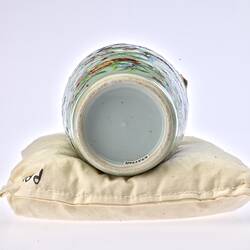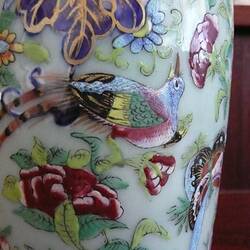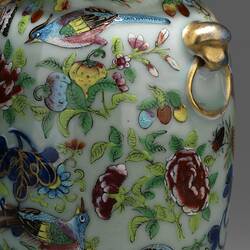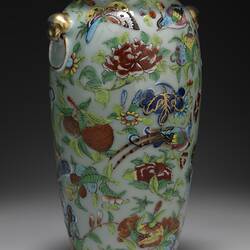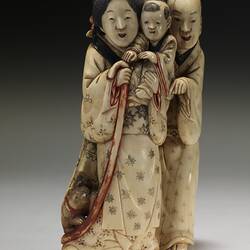Summary
Porcelain vase with an all-over pattern of birds, flowers, butterflies and two rats climbing amongst the branches of a melon tree, manufactured in China during the late Qing Dynasty (1644-1911), circa 1880.
Similar in decorative style to the pair of Chinese porcelain tea cups and plate, this painted vase incorporates the same artistic motifs of birds, butterflies and peony flowers, here complimented by the addition of two rats painted in cobalt blue with gilt highlights.
In the same way that the peony flower represents wealth and prosperity, butterflies symbolise joy and longevity, rats too have an important meaning in Chinese art. While in Western culture rats have come to be regarded negatively, in Chinese the rat assumes the position as the first of the twelve zodiac animals. Rats symbolises courage and intelligence, but are often also depicted with melons as both reproduce in abundance, and therefore have come to represent fertility. On this vase, the two rats climb among the branches of a melon tree.
Only three exhibitors displayed ceramic ware under Class 20, Pottery, in the Chinese Court at the 1880 Melbourne International Exhibition, although none of them are recorded in the Official Catalogue as displaying anything but vases.
Physical Description
Slightly tapering cylindrical. Raised decoration of birds, rats, butterflies, gourds, etc. highlighted in blues, gold, reds, pinks, etc on celadon green ground. Two finials (stylised dog heads) holding rings in their mouths at base of neck. No markings.
More Information
-
Collection Names
-
Collecting Areas
-
Acquisition Information
Cultural Gifts Donation from Dr Will Twycross, 23 Jan 2009
-
Acknowledgement
Donated through the Australian Government's Cultural Gifts Program
-
Place & Date Made
-
Place & Date Exhibited
Royal Exhibition Building (REB), Carlton, Greater Melbourne, Victoria, Australia, 1880-1881
-
Collector
Mr John Twycross, Elsternwick, Greater Melbourne, Victoria, Australia, 1881
-
Classification
Royal exhibition building, International exhibitions, Exhibition heritage
-
Category
-
Discipline
-
Type of item
-
Overall Dimensions
115 mm (Width), 225 mm (Height)
-
Overall Dimensions
125 mm (Width), 115 mm (Depth), 225 mm (Height)
Measurement From Conservation.
-
Keywords
Ceramics, Chinese Art, Decorative Arts, Exhibitions: Melbourne International, 1880-1881, Royal Exhibition Building
